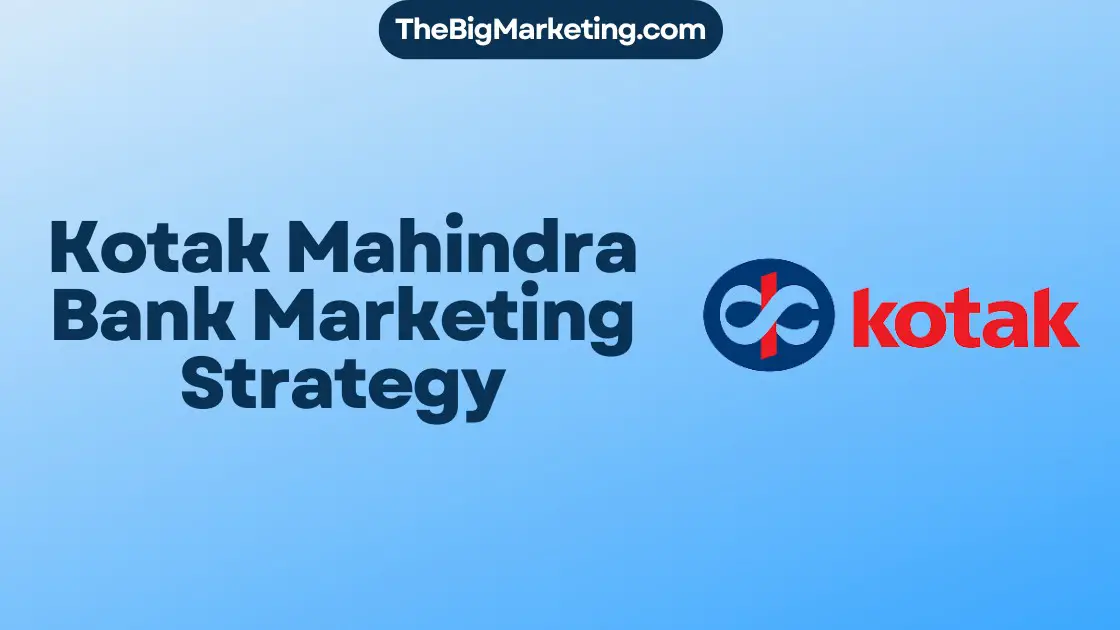In 2024, app marketing strategies are evolving to adapt to the changing mobile landscape. With over six million apps in the app stores, standing out and attracting users requires a well-planned app marketing strategy.
This complete guide will cover various aspects of app marketing, including App Store Optimization (ASO), user acquisition strategies, app analytics, app monetization techniques, mobile ad campaigns, app localization, app review management, and optimizing the mobile user experience.
Key Takeaways:
- App marketing strategies need to evolve to keep up with the changing mobile landscape.
- Having a well-planned app marketing strategy is crucial to stand out among the millions of apps in the app stores.
- App Store Optimization (ASO), user acquisition strategies, app analytics, and app monetization techniques are essential elements of an app marketing strategy.
- Effective mobile ad campaigns, app localization, app review management, and optimizing the mobile user experience are key to attracting and retaining users.
- Stay updated with the latest trends and continuously improve your app marketing strategy to ensure long-term success.
Pre-Launch Tasks for App Marketing
Before launching your app, there are several essential pre-launch tasks that you need to complete in order to establish a strong foundation for your app marketing strategy. These tasks are crucial in ensuring the success and effectiveness of your app marketing efforts.
Market Research
An integral part of any app marketing strategy is conducting thorough market research. This involves analyzing the market landscape, identifying your target audience, and understanding their needs and preferences. Through market research, you can gather valuable insights that will help you tailor your app’s features, design, and marketing messages to resonate with your target audience.
Branding and Messaging
Defining your app’s branding and messaging is another critical aspect of your pre-launch tasks. Your branding should reflect your app’s unique value proposition and differentiate it from competitors. It should convey your app’s core message and appeal to your target audience. By developing a consistent and compelling brand identity, you can create a strong and memorable impression in the minds of your potential users.
App Marketing Budget
Setting an app marketing budget is essential for effectively allocating resources and maximizing the impact of your marketing efforts. Your budget should take into account various factors such as the scale of your launch, target market demographics, and desired reach. Allocating the right amount of budget to different marketing channels will help you optimize your app’s visibility and user acquisition.
Traditional Marketing Methods
While digital marketing channels play a significant role in app promotion, it’s important not to overlook the power of traditional marketing methods. This can include offline advertising, public relations, influencer collaborations, and other offline channels that can help you reach your target audience and create awareness for your app. Incorporating a combination of traditional and digital marketing strategies will allow you to maximize your app’s exposure and attract a diverse user base.
| Pre-Launch Tasks for App Marketing | Benefits |
|---|---|
| Market Research | Gains insights into target audience preferences and needs |
| Branding and Messaging | Creates a unique and memorable app identity |
| App Marketing Budget | Optimizes resource allocation for maximum impact |
| Traditional Marketing Methods | Expands reach beyond digital channels |
App Store Optimization (ASO)
App Store Optimization (ASO) is a critical component of any successful app marketing strategy. It involves optimizing various elements of your app’s listing in the app stores to improve visibility and rankings. By implementing effective ASO techniques, you can increase the chances of your app being discovered by potential users and drive more organic downloads.
Keyword Research
Keyword research is an essential aspect of ASO. By identifying the most relevant keywords for your app, you can optimize your app’s listing to appear in search results when users look for specific terms. Conduct thorough keyword research to understand what keywords your target audience is using and prioritize those that have high search volume and low competition. Incorporate these keywords naturally into your app’s title, subtitle, description, and even in the app’s content to enhance its visibility.
Competitor Analysis
Analyzing your competitors’ strategies can provide valuable insights that can inform your ASO efforts. Take the time to study and understand what keywords your competitors are targeting, how they are optimizing their app’s listing, and what unique selling points they emphasize. By identifying gaps or opportunities, you can tailor your ASO strategy to stand out and offer a compelling value proposition to potential users. Remember, it’s not about copying your competitors but using their strategies as inspiration to differentiate your app.
Optimizing Your App’s Listing
Once you have conducted keyword research and analyzed your competitors, it’s time to optimize your app’s listing with compelling content. The goal is to provide potential users with enough information to understand what your app offers and why they should choose it. Focus on creating a captivating app icon, eye-catching screenshots, a well-written description, and positive app reviews. Use persuasive language that highlights the unique features and benefits of your app to attract users and increase conversions.
| ASO Element | Optimization Tips |
|---|---|
| App Title | Include relevant keywords, make it memorable |
| Subtitle | Highlight unique features or value propositions |
| Description | Write a compelling and informative description, use relevant keywords naturally |
| App Icon | Create an attractive and recognizable icon that reflects your app’s purpose |
| Screenshots | Showcase key features and benefits, optimize for visual appeal |
| Reviews | Encourage positive reviews, respond promptly to user feedback |
By implementing effective App Store Optimization (ASO) techniques, you can improve your app’s visibility, attract a wider audience, and increase downloads. Remember to regularly monitor and analyze your app’s performance to make informed adjustments and continuously optimize your ASO strategy.
Developing Branding and Messaging
Effective branding and messaging are crucial components of a successful app marketing strategy. To attract and retain your target audience, it’s essential to develop a brand identity and messaging that aligns with their needs and effectively communicates the value and benefits of your app.
When developing your app’s branding, aim to establish a unique and recognizable identity that sets you apart from your competitors. This includes creating a visually appealing app logo, choosing a color scheme that evokes the desired emotions, and designing a user interface that reflects your brand’s personality.
Additionally, crafting compelling messaging that resonates with your target audience is key. Your messaging should concisely convey what makes your app special and how it solves a problem or fulfills a need. Use clear and concise language to communicate the unique features, benefits, and value proposition your app offers to users.
When defining your branding and messaging, it’s essential to keep your target audience in mind. Understand their demographics, preferences, and pain points to tailor your messaging accordingly. By doing so, you can establish a strong connection with your users and build trust in your app.
Creating Branding and Messaging that Resonates
To create branding and messaging that resonates with your target audience, consider these key strategies:
- Research your target audience thoroughly to understand their needs, preferences, and aspirations.
- Identify your app’s unique selling points and highlight them in your messaging.
- Create a brand voice and tone that matches the values and personality of your target audience.
- Use language that is clear, concise, and easy to understand.
- Develop a tagline or slogan that encapsulates the essence of your app and appeals to your target audience’s desires.
- Consistently apply your branding and messaging across all app marketing channels to maintain a cohesive and recognizable identity.
Remember, effective communication with your users is crucial. Engage with them through various channels, such as in-app notifications, social media, and email marketing. Regularly provide valuable content, updates, and personalized offers to keep them engaged and encourage long-term usage and loyalty.
By developing branding and messaging that aligns with your target audience and effectively communicates the value and benefits of your app, you can establish a strong brand presence and drive user engagement and conversions.
| Benefits of Effective Branding and Messaging | How it Achieves Results |
|---|---|
| Creates brand recognition and differentiation | Users can easily identify and remember your app amongst competitors. |
| Builds trust and credibility | Users perceive your app as reliable and trustworthy, increasing their willingness to try and continue using it. |
| Enhances user engagement | Clear and compelling messaging encourages users to explore and interact with your app. |
| Increases user loyalty and retention | Effective branding and messaging foster emotional connections, leading to long-term user retention. |
Creating a cohesive and compelling branding and messaging strategy is a critical component of your overall app marketing strategy. It sets the foundation for attracting and engaging your target audience while effectively conveying the unique value your app offers. By investing time and effort into developing your branding and messaging, you can build a strong brand presence and drive user acquisition and retention.
Allocating App Marketing Budget
A clear app marketing budget is crucial for the success of your app marketing strategy. By allocating your resources effectively, you can maximize your return on investment (ROI) and drive more app downloads. The key to a successful app marketing budget lies in defining it based on your profit margins and the maximum cost per install (CPI) you can afford. Let’s explore how you can create a scalable budget and optimize it for optimal results.
Defining Your App Marketing Budget
When allocating your app marketing budget, it’s essential to consider your profit margins and the desired number of app installs. Start by assessing how much revenue your app generates and determine the percentage you’re willing to invest in marketing. This will help you set a realistic budget that aligns with your overall business goals and financial capabilities.
Next, consider the maximum cost per install (CPI) you can afford. The CPI refers to the amount you’re willing to spend to acquire a single app install. This figure varies widely across different app categories and marketing channels. Conduct market research to understand the average CPI within your industry and adjust your budget accordingly.
Creating a Scalable Budget
A scalable app marketing budget allows you to adapt your spending based on the performance and effectiveness of your campaigns. Start by allocating a portion of your budget to test different marketing channels and strategies. Monitor the results and identify the most effective channels that generate a high number of quality app installs.
Once you have identified the top-performing channels, you can reallocate your budget accordingly. Allocate a higher budget to the channels that yield the best results, while reducing or eliminating spend on underperforming channels. Continuously monitor and optimize your budget based on the performance data to ensure you’re investing in the most effective strategies.
Optimizing Your Budget for Maximum App Downloads
Working with a mobile marketing agency can be beneficial when optimizing your app marketing budget. They have the expertise and experience to maximize your budget’s effectiveness and drive more app downloads. By leveraging their knowledge, they can optimize your campaigns based on real-time data and industry insights.
Collaborate closely with your mobile marketing agency to establish clear key performance indicators (KPIs) that align with your app marketing goals. Regularly review and analyze the performance data to identify areas of improvement and make data-driven decisions that optimize your budget for maximum app downloads.
Remember, a successful app marketing strategy requires strategic budget allocation and continuous optimization. By defining a clear budget, creating a scalable plan, and leveraging the expertise of a mobile marketing agency, you can maximize your app’s visibility, attract more users, and drive higher ROI.
Selecting App Marketing Channels
A successful app marketing strategy requires a carefully selected combination of app marketing channels to effectively reach your target audience. By leveraging a mix of social media marketing, paid media, and app store optimization (ASO), you can increase app downloads and enhance user engagement. Creating a comprehensive marketing channel mix that integrates these strategies will help you achieve your app marketing goals.
Social Media Marketing
Social media platforms have become integral to app marketing strategies. By utilizing social media channels such as Facebook, Instagram, Twitter, and LinkedIn, you can connect with your target audience, increase brand awareness, and drive app downloads. Developing engaging content, running targeted ad campaigns, and fostering user engagement through contests or influencer collaborations are effective social media marketing tactics.
Paid Media
Paid media channels, including search engine advertising, display advertising, and influencer marketing, can significantly boost app visibility and user acquisition. Investing in strategic ad campaigns allows you to reach a broader audience, target specific demographics, and drive app downloads. Collaborating with influencers or running sponsored content placements can also generate valuable user engagement and referrals.
App Store Optimization (ASO)
App Store Optimization (ASO) plays a vital role in maximizing app visibility and increasing organic app downloads. By optimizing your app’s listing with relevant keywords, compelling descriptions, and eye-catching screenshots, you can improve your app’s search rankings and attract more users. Conducting thorough keyword research, monitoring user reviews, and analyzing competitor strategies are essential components of effective ASO.
Comparison of App Marketing Channels
| Channel | Advantages | Disadvantages |
|---|---|---|
| Social Media Marketing |
|
|
| Paid Media |
|
|
| App Store Optimization (ASO) |
|
|
By carefully evaluating the advantages and disadvantages of each app marketing channel, you can determine the best combination that aligns with your app marketing strategy. An integrated approach considering social media marketing, paid media, and app store optimization (ASO) will help you optimize app downloads, increase user engagement, and ultimately drive the success of your app.
Measuring App Performance with Analytics
App analytics play a crucial role in an effective app marketing strategy. By leveraging app analytics tools, developers and marketers can gain valuable insights into app performance and user behavior. These insights are instrumental in making data-driven decisions to optimize app marketing efforts and enhance the overall user experience.
App analytics provide a comprehensive view of how users interact with an app, enabling developers to track key performance indicators (KPIs) that are indicative of success. Some essential KPIs include:
- User retention rate: This metric measures the percentage of users who continue using the app over a specific period. By analyzing retention rates, developers can assess the app’s appeal and identify areas for improvement.
- User engagement: Tracking user engagement metrics such as the number of sessions per user, time spent in the app, and specific features used allows developers to gauge how users interact with the app. This data can help identify popular features and understand user preferences.
- In-app purchases: Monitoring the revenue generated through in-app purchases provides insights into the effectiveness of monetization strategies. It helps identify purchasing patterns, popular products, and opportunities for upselling.
By measuring these KPIs and analyzing the data, developers can discover trends, uncover user preferences, and identify opportunities for improvement. Armed with this knowledge, informed data-driven decisions can be made to optimize app marketing efforts and drive user acquisition, engagement, and retention.
Implementing App Analytics
To measure and leverage app analytics effectively, developers and marketers must implement an analytics solution that aligns with their specific goals and requirements. Some popular app analytics platforms include:
- Google Analytics for Mobile Apps: This robust analytics tool offers comprehensive insights into user behavior, acquisition, engagement, and more. It provides customizable reports, real-time data tracking, and integration with other Google tools.
- Flurry Analytics: Owned by Yahoo, Flurry offers app analytics with a focus on user segmentation to understand different user groups and their characteristics. It provides in-depth user engagement analysis, conversion tracking, and cohort analysis.
- Apple App Analytics: Specifically designed for iOS apps, this analytics tool provides valuable insights into user acquisition, retention, and user engagement metrics. It offers detailed performance data for App Store Optimization (ASO) and enables developers to measure the effectiveness of marketing campaigns.
Implementing a suitable app analytics solution enables app developers and marketers to gather actionable data, measure performance, and make data-driven decisions. It empowers them to iterate, refine app marketing strategies, and continually enhance user experience.
| Benefits of App Analytics | Key Performance Indicators (KPIs) | Analytics Platforms |
|---|---|---|
| Provides valuable insights into user behavior and preferences | User retention rate | Google Analytics for Mobile Apps |
| Identifies opportunities for app optimization and improvements | User engagement | Flurry Analytics |
| Optimizes app marketing efforts based on data-driven decisions | In-app purchases | Apple App Analytics |
Localization for International Markets
Expanding your app to international markets is a key strategy for reaching a global audience and maximizing your user base. However, simply making your app available in different countries is not enough. To effectively penetrate international markets, you need to embrace the concept of app localization.
App localization involves adapting your app to the unique languages, cultures, and market preferences of different countries. By tailoring your app to meet the specific needs and expectations of users in international markets, you can provide a seamless user experience and increase the likelihood of success.
Cultural adaptation is a crucial aspect of app localization. When expanding to international markets, it’s important to consider cultural nuances and sensitivities. This includes understanding local customs, values, and idiomatic expressions. By incorporating these elements into your app’s design, user interface, and content, you can create a more engaging and relatable experience for your international users.
Language Translation
One of the primary components of app localization is language translation. This involves accurately translating all app content, including menus, buttons, error messages, and descriptions, into the language of the target market. It’s important to work with professional translators who are native speakers of the target language to ensure accuracy and cultural appropriateness.
Additionally, it’s essential to consider the length and structure of translated text. Languages vary in terms of word length and sentence structure, so it’s important to allow enough space for translated text within your app’s user interface. This ensures that your app remains visually appealing and user-friendly across all languages.
Localized Marketing Strategies
When entering international markets, it’s vital to develop localized marketing strategies. This includes conducting market research to understand the preferences and behaviors of users in each target market. By tailoring your marketing messages and campaigns to suit the specific needs and interests of each market, you can increase the effectiveness of your app marketing efforts.
Localized marketing strategies may include adapting your app’s visual assets, such as screenshots and promotional videos, to resonate with the target audience. Additionally, it’s important to leverage local social media platforms, influencers, and advertising channels to reach your international users effectively.
| Localization Strategy | Advantages | Challenges |
|---|---|---|
| Translation and Localization | – Provides a comprehensive and tailored experience for international users | – Requires significant time and resources – Potential issues with accuracy and cultural sensitivity |
| Regional vs. Country-Specific Localization | – Targets specific regions or countries with similar language and culture – Enables a more focused and efficient localization process |
– Might overlook nuanced differences between countries within a region |
| In-App Customization | – Allows users to personalize their app experience based on preferences and cultural background | – Requires additional development and design efforts |
| Localized Content and Features | – Tailors app content and features to specific regions or countries | – Requires continuous updates and maintenance – Can result in a fragmented user experience |
By implementing effective app localization strategies, you can position your app for success in international markets. Remember to consider cultural adaptation, language translation, and localized marketing strategies to ensure a seamless user experience and increase your app’s visibility and appeal in global markets.
Managing App Reviews and Ratings
App reviews and ratings play a critical role in shaping app store rankings and influencing user perception. Positive reviews and high ratings can significantly boost app downloads and enhance user trust and engagement. On the other hand, negative reviews and low ratings can deter potential users and harm your app’s reputation. Therefore, effective management of app reviews and ratings is essential for a successful app marketing strategy.
One important aspect of managing app reviews and ratings is actively monitoring user feedback. Regularly checking and responding to user reviews demonstrates your commitment to addressing user concerns and improving their experience. It also provides an opportunity to gather valuable insights and identify areas for app enhancements.
Addressing user issues promptly is crucial in managing app reviews and ratings. Taking the time to acknowledge user feedback and provide timely resolutions shows users that their opinions are valued. By swiftly addressing and resolving problems, you can turn dissatisfied users into satisfied advocates for your app.
Improving user satisfaction is another essential component of managing app reviews and ratings. Consistently striving to enhance user experience and incorporating user feedback into app updates can help increase positive reviews and higher ratings. By listening to your users’ needs and making necessary improvements, you can foster a loyal user base and attract more positive app reviews.
Additionally, actively soliciting user feedback and encouraging users to leave reviews can help generate a larger volume of ratings and reviews. Providing convenient prompts within your app or leveraging marketing campaigns to encourage user feedback can increase the likelihood of users sharing their experiences and opinions.
Furthermore, optimizing your app’s user interface, navigation, and overall functionality based on user feedback can lead to better user experiences and improved ratings and reviews. Continuously monitoring user sentiment and refining your app based on their suggestions can contribute to higher user satisfaction and positive app store ratings.
To effectively manage app reviews and ratings, utilizing app review management tools and platforms can streamline the process. These tools enable you to efficiently monitor reviews, respond to user feedback, and analyze trends to identify areas for improvement. They help centralize the review management process and provide actionable insights for enhancing user satisfaction.
In conclusion, managing app reviews and ratings is vital for the success of your app marketing strategy. By actively monitoring user feedback, addressing issues promptly, improving user satisfaction, and optimizing your app based on user suggestions, you can cultivate a positive reputation, attract more positive reviews, and increase user trust and engagement. Prioritizing effective app review management contributes to the overall success and growth of your app in the competitive app market.
Conclusion
In conclusion, a well-executed app marketing strategy is essential for achieving success in 2024. By leveraging the power of app store optimization (ASO), allocating a clear and effective app marketing budget, utilizing a diverse range of app marketing channels, measuring app performance through analytics, prioritizing app localization, and managing app reviews and ratings, you can propel your app to new heights in the competitive mobile landscape.
It is vital to stay informed about the latest mobile app marketing trends and continuously adapt your app marketing strategy to stay ahead of the curve. By embracing innovation and keeping a pulse on the ever-changing mobile app ecosystem, you can maximize your chances of long-term success and sustainable growth.
Remember, success in 2024 requires a comprehensive and data-driven approach to app marketing. Stay dedicated, continually refine your strategies, and never underestimate the power of user feedback and engagement. With a solid app marketing plan in place, you can position your app for success and achieve your goals in the dynamic and fast-paced world of mobile app marketing.



